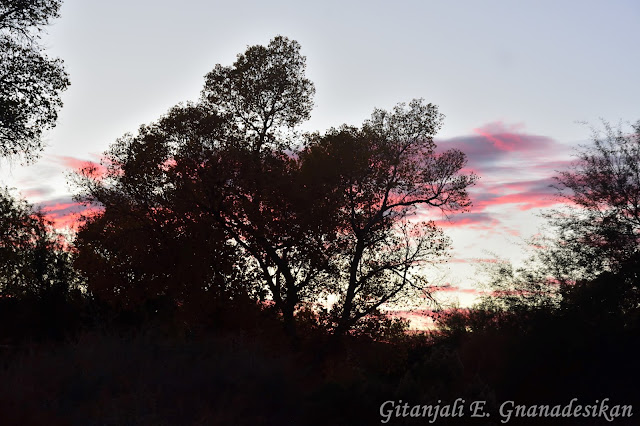I've been meaning to check out the Sweetwater Wetlands for ages, but I kept not getting around to it, either opting for more of a hike or just walking along the Rillito, which I don't have to drive to. But I finally went there for a walk a few days ago, and I'll definitely be going back again soon and frequently.
Sweetwater is--as far as I know--the only wetland here in arid Tucson. It was originally built as part of a wastewater reclamation project, and although water reclamation technology has since improved such that the wetlands are not as necessary, they still help to naturally filter the reclaimed water before being either released into the Santa Cruz River or pumped back into town to use for landscaping purposes. As such, Sweetwater is a beautiful oasis in the middle of the desert, full of cattails, water, birds, and deciduous trees, currently bright with fall foliage.
The last time I saw an American coot (Fulica americana) was up at Canyon Lake on the Salt River. There isn't much water around Tucson for them, but that's the beauty of Sweetwater, making it a great place for birding especially as a stopover for migratory species.

Although they are common here in Tucson, quail always make me happy. This male Gambel's quail (Callipepla gambelii) was one of about five or six I saw between two family groups yesterday. Its reddish-brown crown was gleaming beautifully in the sunlight.

This cute little white-crowned sparrow (Zonotrichia leucophrys) was obliging enough to perch in a tree right on the path, posing nicely for a photo.

But it was the red-winged blackbirds (and perhaps other unidentified medium-sized black birds) that stole the show. They were flocking in large numbers--something I associate more with species such as starlings--but which is apparently
a seasonal behavior for blackbirds; in the winter, they roost in flocks of thousands to millions of individuals. At first there were just a few, and then they started congregating as individuals returned to roost for the evening.
Then they started flocking, moving through the air in beautifully coordinated synchrony. It was mesmerizing.
I don't usually do videos, but here's a brief one:
Wandering through the various loops of trails, this (non-venomous) snake was right in the middle of the trail. I think it's a common kingsnake (
Lampropeltis getula).
The cattails were so thick and at the stage where their seeds float away on the wind, leading to a snow-like covering on the ground and nearby trees.
The park is on the west side of town, making it great for sunset viewing too.
And as the sun went down, the moon--not quite full--rose opposite.
I'm looking forward to spending more time here in the future!





















































